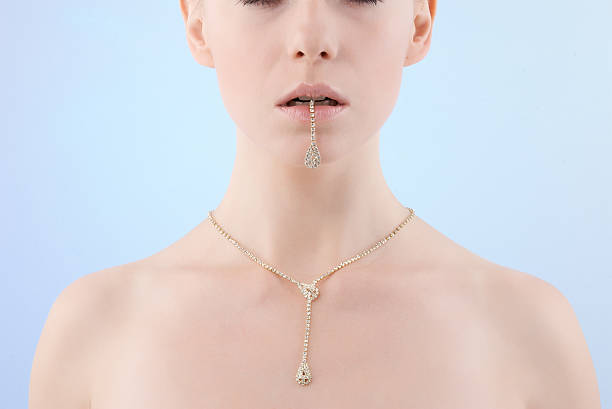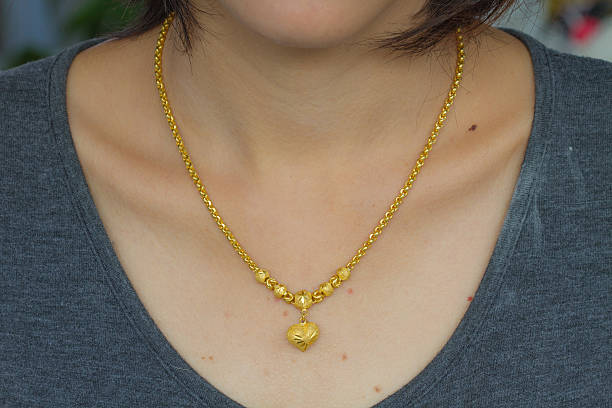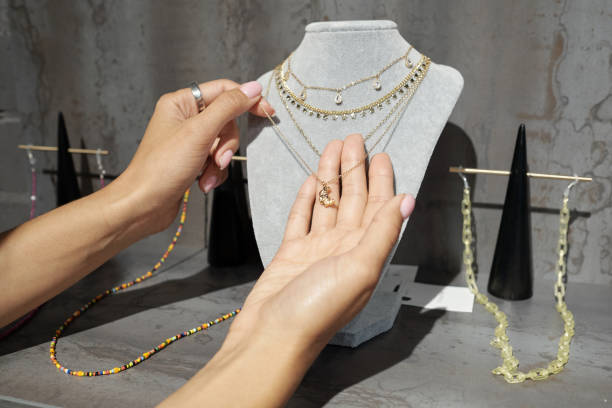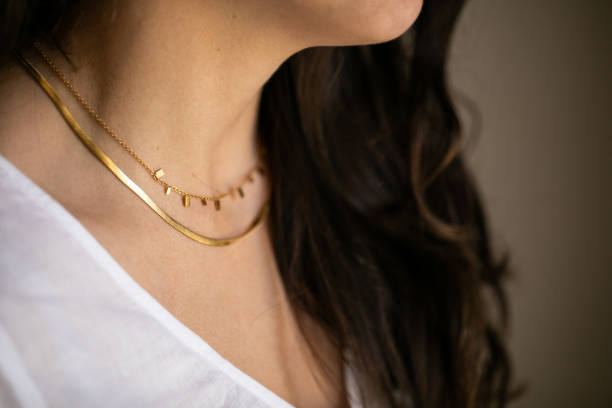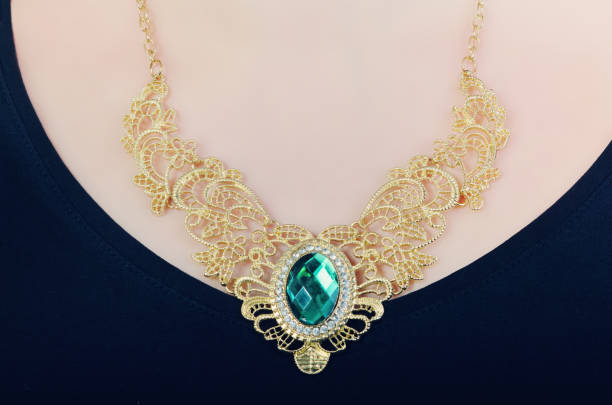Golden Threads: The Cultural Significance of Gold Necklaces around the World
Weird, right, how one thing-so universal and loved, a 18k gold necklace womens-means so many things, yet it can still hold an individual meaning with every different person? Yeah, it’s kinda crazy. Gold is something more than tinsel; it is the whole tale, wrapped up around your neck, a fragment of history, a spell with particular interactions. We should make this striking trip all over the world to see what a gold necklace means in various cultures.

The gold necklaces are so intricately intertwined in the social fabric of Indians that, beyond ornaments, they are family heirlooms, superficial talking points, and even divine blessings. For instance, weddings are all about gold. If one visits the place in a wedding season, then blinding gold worn by women is not an uncommon thing to see. Each-from delicate chains to thick chokers-it has its own story to tell in tradition and heritage. Gold is the sign of prosperity and good fortune passed down through generations. Now, the above-mentioned content sounds too monotonous.
The practice is to start collecting gold many years in advance of the birth of a girl child.
Now, jump over the Mediterranean to Egypt. The ancient Egyptians just loved gold: to them, it was the flesh of the gods-between the dice! It would not be at all astonishing if there were a pharaoh or two sporting fabulous necklaces of gold, displaying the power and lives involving eternity, since the gods they told about in the hieroglyphics draped it.
It did not end there, though; even to this very day, modern Egyptians have associated gold with signs of richness and beautiful appearances. From the most basic of pendants to an intricately made collar, gold necklaces really seize something timeless with their elegance and spirituality.
Now go to Italy, and the gold necklaces there are not only part of the accessory world; the Italians inherently know how to wear fashion, reflecting it in their love for well-designed jewels. A gold necklace for Italians is not mere jewelry; instead, it is a piece of art.
Handmade by artisans, these necklaces usually are designed with great detail, which can be said to speak volumes of their culture. Wear one, and you just about feel like you are going right into some Italian fairytale.
Now all the way to the Middle East, full steam ahead, failure is not an option when it comes to gold; in Saudi Arabia, United Arab Emirates, and Iran, for instance, gold necklaces signify one’s wealth, beauty, and even social status.
They are usually very well elaborated with lots of amazing details. Generally, one can be able to see a woman getting prosperous gold sets during the time of marriage. All these ornaments are not just for beautification but also financial securities for women.
In some African countries, the gold necklace is regarded as a part of the cultural ritual and one of the ways of social identification. Consider Ghana, for example, whose gold has lain at the heart of the Ashanti Kingdom. The Ashanti necklaces are generally combined with other forms of gold ornamentation and signify wealth, power, and respect. Let its radiance bathe not only the royal families but also the ordinary people during major festivals and coming-of-age events.
Dressed back in China, the whole feel of gold necklaces completely changes. All of it has to do with auspiciousness, especially during the Lunar New Year or at weddings. Gold is about wealth and good fortune. It is not just the gold itself but also the craftsmanship in the Chinese gold jewelry that is striking at times, housing techniques from ancient times down the line of generations. A gold necklace can wear fully detailed etching of either dragons or phoenixes, both signifying power, and where positive energy ushers in renewal.
How 18K Gold Necklaces Shine in Traditional Ceremonies
An 18K gold women’s designed necklace-just imagine the brilliance against the vibrancy of the ceremonial wear. There is something magical about gold that really deeply attaches to the cultural rope, crossing time and borders.
Gold is not an ornament; it is a saga of richness in India. One 18K gold necklace is not of metal but an ideal beacon of tradition. Many intricated designs ranging from chokers that hug the neck to many chain-long cascades are put on the bride. Every necklace bears ancestral blessings passed down to generations. Cultural, it’s like milk and honey, a symbol of prosperity and good fortune.
Take for example Manisha, who, since her childhood, has thought about her wedding day.
Hers would be her grandmother’s 18k masterpiece necklace, one which rendered words incoherent. Tears ran down her face on the big day when people donned the heavy piece and whispered odes to artistry and timeless beauty now carried upon herself.
Jump across the global South to the Middle East, and gold is more than popular-it’s near-religious. One simply cannot help but be blinded by the screaming 18k gold necklaces adorning every celebration. The designs are intricate, often laced with symbolism like birds, tears, and calligraphy. These necklaces aren’t worn out of vanity but are an embodiment of oneself and heritage.
Then comes Ghana. Oh, the unadulterated ebullience of traditional festivals! It is in the Asante culture that 18k gold necklaces shine so bright. Royals and commoners, all are seen adorning elaborately designed pieces of art on important occasions. Here, too, the lock-shaped pendants, handmade part by part, grab all the limelight.
Here, too, gold crosses over from mere ornamentation to heritage and telling of tales. Now, jet over to Italy-the artisans in Tuscany have soul. An 18k necklace in gold that the females love here is not just some trinket but a signature of the owner’s legacy and pride of the family. Think laughter echoing through a piazza, the spill of red wine, and joy. Italians wear their heritage through geometric and fluid designs, with every piece telling something about ancestry. Amazingly enough, ritual has connected itself with the glamour of gold worldwide.
Even today, this talismanic quality of gold is a keepsake in store, with 18k gold necklaces serving very well. They are not only valued for their good looks but also for protection and good luck. You will also have to account for newlyweds from Africa: Gold at an Ethiopian wedding seems just about interwoven into the wedding tapestry. The 18k pieces are huge and strikingly beautiful, The gold glitters between white, red, and green attire, almost as if it captured a sliver of the sun. More often than not, many necklaces don the bride, their glitter of 18k gold rivaling the sun itself.
For example, in countries like Russia, for example, the gold harks back to bygone days: steeped in folklore, passed down in heirloom form, hugely elaborate 18k gold necklaces. These are stout, bold pieces flecked with blue sapphires or rich red rubies, almost as if the stories themselves had turned to stone and metal. Traditional ceremonies are the narrative theater of the 18k gold necklaces.
Wholeness in each piece comes one by one so that they won’t remain in any museum. They are part of the performance-very often the star act. Joy, sorrow, and gamut of life are wrapped in a gleam of gold.
